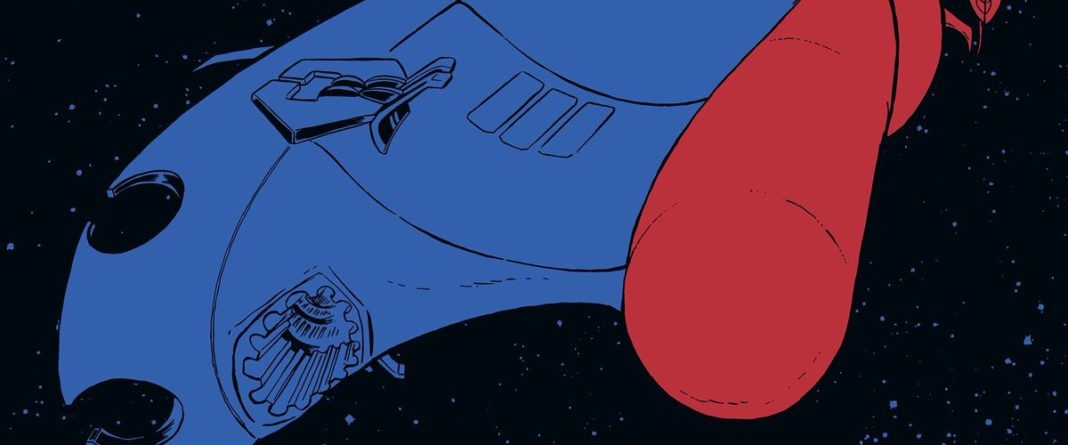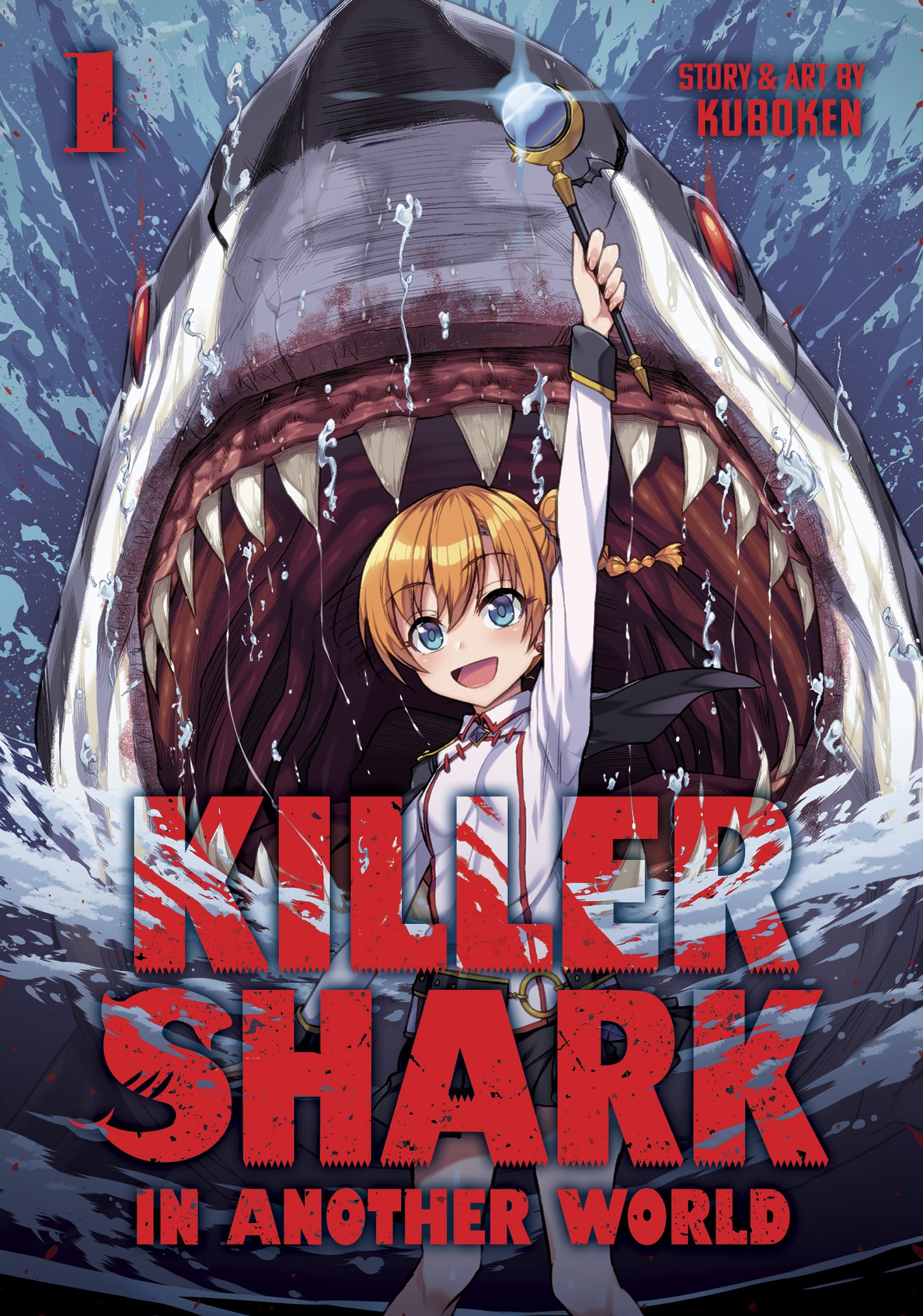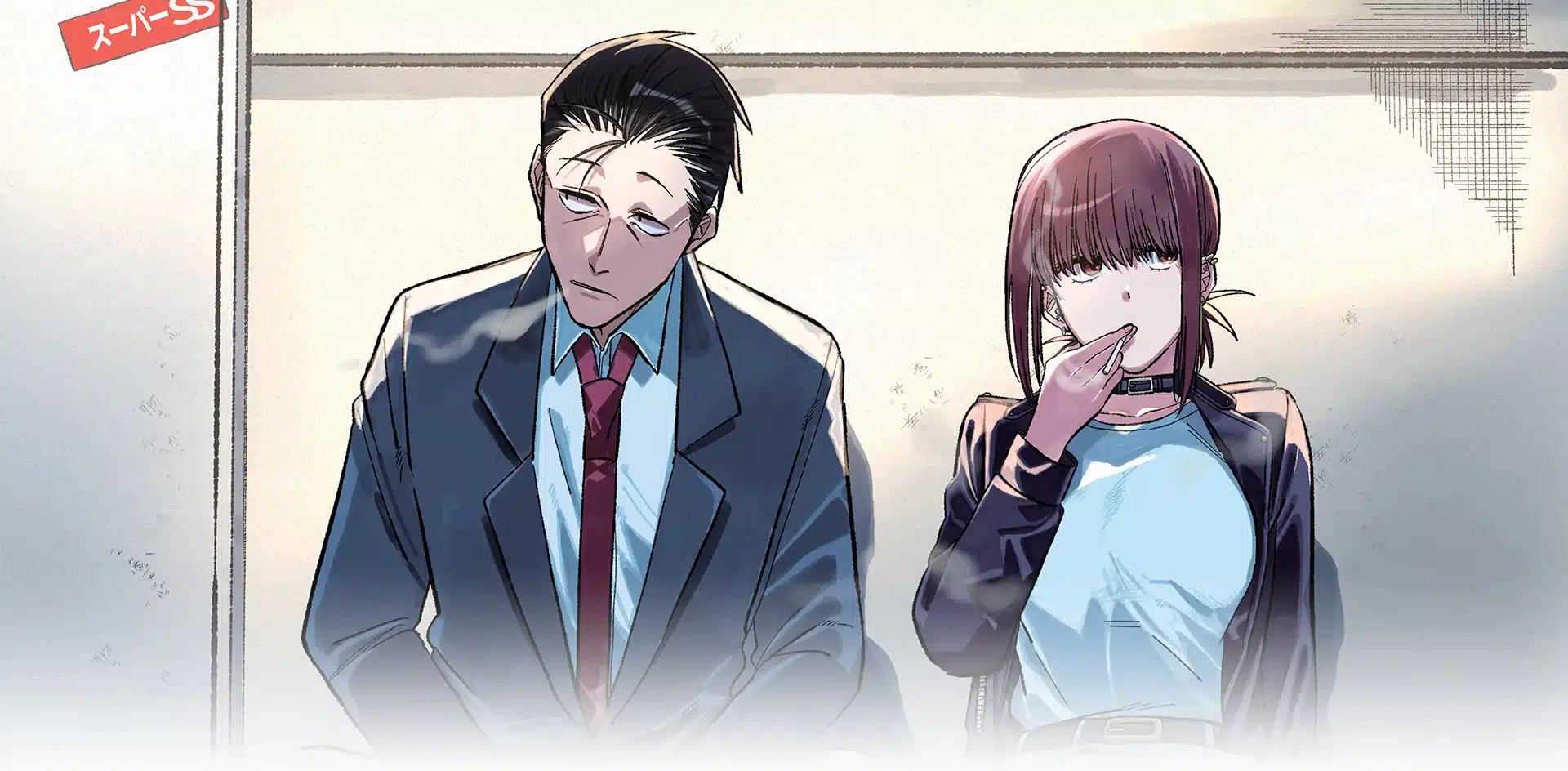 Space Battleship Yamato
Space Battleship Yamato
Story & Art: Leiji Matsumoto
Translation: Zack Davisson
Adaptation: J.P. Sullivan
Lettering and Retouch: Ludwig Sacramento
Publisher: Seven Seas Entertainment
At the turn of the 23rd century, Earth has had to resort to subterranean living, the surface of the planet having been pillaged and destroyed by the cruel Gamilans, an alien race bent on Earth’s destruction. Two young men, Susumu Kodai and Daisuke Shima, intercept a message from a ship that has crash-landed on Mars: the Earth is doomed unless an intrepid crew can make the perilous journey to the planet Iscandar to receive a device called the Cosmic Cleaner, which will clear the Earth of all radioactivity.
Starsha, the being who sent the message from Iscandar, also sent along the blueprints for a faster-than-light engine, to be built immediately to aid in the rescue crew’s journey. The engine is built inside the sunken battleship Yamato, and old Captain Okita, who has long been fighting against the Gamilans, conscripts a crew that includes Kodai and Shima, as well as the inept doctor Sado, the lovely and highly skilled Yuki Mori, and a robot named Analyzer.
Space Battleship Yamato is not a new story to many audiences in North America; in 1979, a heavily edited version of the animated television series made its way overseas under the title Star Blazers. But now interested parties can have the entire original story, plus a bonus chapter titled “Eternal Story of Jura,” all contained in one hefty volume.
Leiji Matsumoto is one of the most recognizable mangaka all the world over, with his dramatic, interwoven space operas inspiring scores of science fiction for decades to come. Yamato is an especially interesting read because it is an early work of his, predating Galaxy Express 999 and Captain Harlock (though the dashing space pirate captain does make a brief appearance, and readers are treated to a hint about his origin). It is not a perfect work by any means — it leaves off with no real ending, for one thing. But it is a beautiful work that establishes many of Matsumoto’s most resounding themes: the complacency of inept governments; the bonds forged in battle; a man’s need for freedom among the stars; and the endless, lonely search for self. Dr. Sado and Analyzer provide a touch of comic relief, but overall the tone of the story is one of somber self-sacrifice for the greater good.
One of the most endearing qualities of Matsumoto’s work is his likening, both in text and imagery, to space as an ocean. Whether the constant references to the “sea of stars” are part of the original Japanese or an interpretation by award-winning translator Zack Davisson is unknown to most readers, but the phrase is so apt in this world populated by spaceships that are designed to look just like the battleships of yesteryear. (Indeed, the Yamato is the very same ship that the Japanese sailed during World War II, retrofitted to operate in space.) And his ship designs are spectacular.
It is easy to forget that Matsumoto is a master draftsman when you just look at his characters. He generally has three main humanoid types: the handsome lad, the woman (they all look more or less the same), and the goofy drunk guy, all of whom are rendered in a loose, flowing ink-brush style. But look more closely at his backgrounds, or at all the various ship terminals with lights, buttons, and dials, and you can see his eye for precision. So even though this complete collection leaves off with a somewhat unsatisfying conclusion, it is a delight to experience, with frequent examples of silent pages populated only by glorious ships posed against a backdrop of inky, star-speckled night.
This is perhaps not a book for the uninitiated. Many younger manga fans will regard it as outdated in both story and art, or will not be able to see the link between this and later science fiction behemoths like Neon Genesis Evangelion (though its anime adaptation is one of creator Hideaki Anno’s absolute favorites). Arguably, it is not even the most sophisticated of Matsumoto’s works, feeling half-finished in this manga format. But it is very much a book for anyone who wants to dive more deeply into the world Matsumoto has so deftly created, where sailors of old find new bearings amongst the wide open unknown, traversing multiple star systems in an effort to correct the poor decisions that have left mankind on the brink of extinction. It is a world of deep desolation, the type of world that breeds hope in the face of insurmountable odds.
Space Battleship Yamato is the genesis of a universe full of romance — not romantic love, but romantic adventure, the kind of sprawling epic saga that thrums with an undercurrent of justice and perseverance, and which breeds a feeling of deep nostalgia in its readers. North American manga aficionados are truly lucky to finally have access to this classic, definitive work in all its 646-page glory. You can purchase a copy here.



 Space Battleship Yamato
Space Battleship Yamato







A fitting article considering this year also marks the fiftieth anniversary of the American debut of ‘Star Blazers’. That was the first show to show me that animation could be used for long-form storytelling outside of animated movies.
The live action Space Battleship Yamato is on Youtube with English subtitles: https://www.youtube.com/watch?v=mIrApvq1YXw
In the 1980s an American company considered doing an adaptation of Space Battleship Yamato and Syd Mead did some color production paintings during early stages of the aborted production.
Oops! Correction: This year is the fortieth anniversary for Star Blazers, not fiftieth. My bad!
Please forgive my ignorance, but is this the same thing that Dark Horse is releasing in new omnibus collections starting in July?
https://www.animenewsnetwork.com/news/2019-01-28/dark-horse-licenses-star-blazers-space-battleship-yamato-2199-manga/.14268
“Please forgive my ignorance, but is this the same thing that Dark Horse is releasing in new omnibus collections starting in July?”
Not quite. ‘Star Blazers: Space Battleship Yamato 2199’ is a remake of the original ‘Yamato’ manga and anime, introducing new characters and (in the case of the anime) with better animation. There is a sequel series set in the year 2202.
“We’re off to outer space
We’re leaving mother Earth
To save the human race
Our Star Blazers!”
Got it. Thanks, Andrew!
Better Link: The link to the article on the Dark Horse manga release seems to be broken, leading to the wrong story. Here’s a better one: https://www.animenewsnetwork.com/news/2019-01-28/dark-horse-licenses-star-blazers-space-battleship-yamato-2199-manga/.142683
Comments are closed.